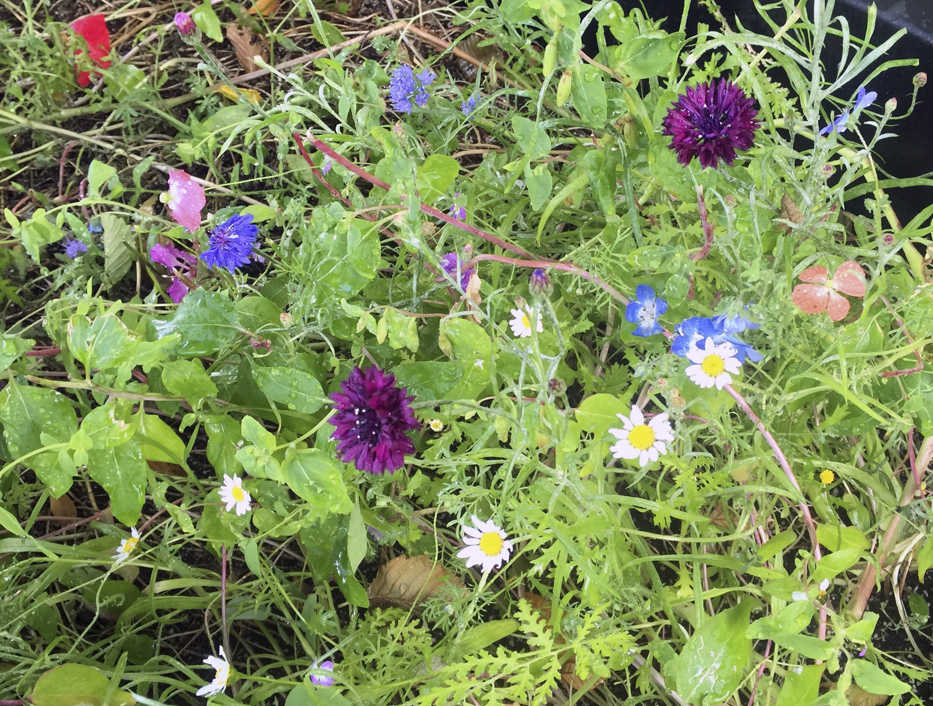Wildflowers are among the easiest plants to grow, especially if you copy Mother Nature. For cool climate gardeners, that means spreading seed over the ground after the first killing frost and before the ground hardens. Natural germination inhibitors will keep them from sprouting if temperatures warm.
Seeds can be sown well into winter for people who live in the Deep South, but it’s best to get that done ahead of the seasonal rains.
“A lot of (wild) grasses are good to go. You can plant them in spring or fall,” said Bill Carter, president of Prairie Moon Nursery near Winona, Minnesota. “But for most of the flowers, especially the mixes, planting in the fall is best.”
Prepare the ground by clearing away as many competing plants as possible. Rake to loosen the soil and rip away roots before surface seeding. Roto-tilling makes things easier if dealing with bare root wildflower plants or shoots.
“Mass plantings can be done after some snow is on the ground,” Carter said. “You can see the throw pattern better. And the freeze-thaw action of early winter actually draws seed into the ground. That naturally drills it in.”
Most of Prairie Moon’s wildflower seed orders come in the spring but sales for larger projects generally occur in autumn. “That’s when the pros do their planting,” Carter said.
Choose bare root plants, plugs or seedlings if you want your wildflower gardening to be fast and easy, said Mike Lizotte, a managing partner of American Meadows, a gardening company in Shelburne, Vermont.
“For most consumers, it all comes down to the size of the area to be planted,” Lizotte said. “They all want speed. But once you get over 100 square feet, when you calculate how many plugs, bare root plants and seedlings are required, that can amount to hundreds or even thousands of dollars.”
You’ll get the same results with seeds within a couple of years, he said. “That makes them a whole lot cheaper.”
Most gardeners like perennials because they continue to flower year after year. “But they won’t flower the first year,” Lizotte said. “Incorporate some annuals for immediate color.”
Combination seed packages seem to be the most popular choice for wildflower buyers, he said. “Get a good mix of perennials and annuals with 20 to 30 species in it.”
Shop around for wildflowers rather than seeking them out in the woods. The odds are against such plants surviving being transplanted because they often require habitats different from those in your yard.
“It’s illegal to pull them out of the ground on most public lands,” Lizotte said. “That can draw a stiff fine.”
And be careful when shopping. Many seed packages come with a high percentage of filler. Ideally, you would be able to see what’s in them or be able to determine how much is pure seed and how much is inert matter, Lizotte said.
The ultimate result is that the plants may not turn out like those pictured,” Lizotte said. “Look for a company that has a lot of expertise rather than somebody with just a little flash packaging.”
Online: For more about the care and feeding of wildflowers, see this University of Vermont Extension fact sheet: http://pss.uvm.edu/ppp/pubs/oh84mead.htm

